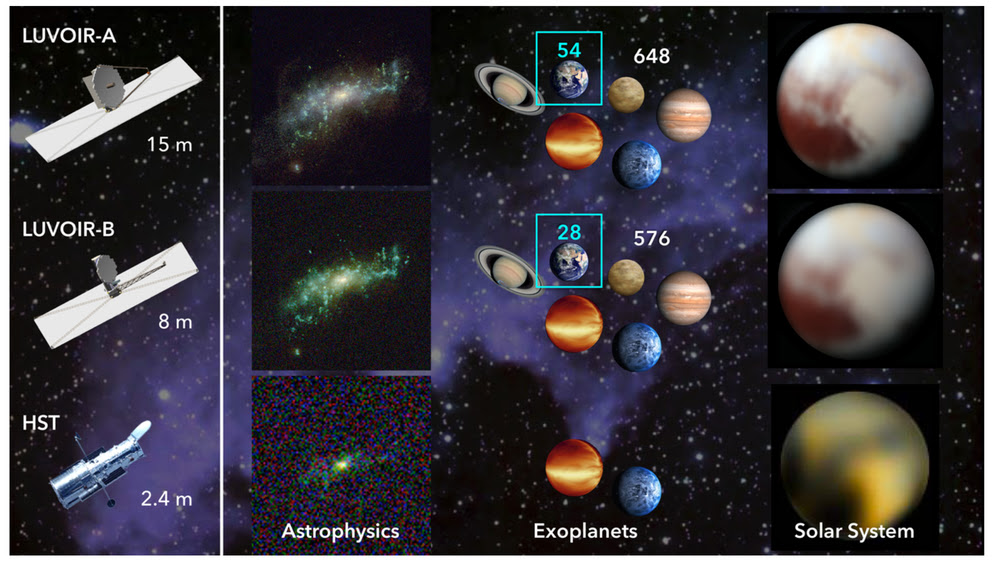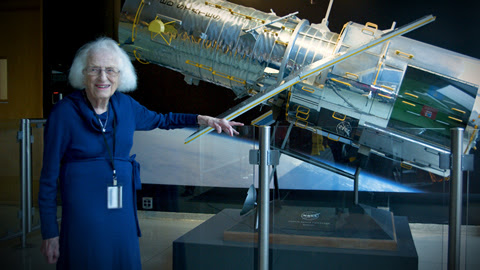The American Astronomical Society met at the beginning of January to discuss the successor of the brand-new James Webb Telescope. NASA presented the first project to launch in 2027 the Nancy Grace Roman Observatory, named after the American astrophysicist who created the first space telescope, an infrared telescope also called WFIRST, which will use a mirror of 2.4 meters in diameter to probe dark matter and dark energy, one of the components of the energy content of the universe.
A second, more distant project is to launch a new observatory dedicated to the search for signs of life on Earth-like planets starting in the 2040s. This new telescope will be located, like the James Webb Telescope and the Roman Space Telescope, around the Lagrange 2 point at 1.5 million kilometers from Earth and will have the mission to find new exoplanets, the ambition of researchers being to find traces of life elsewhere in the universe.
NASA favors the development of a specific telescope dedicated to this new mission and has already given it a name, the observatory of habitable worlds, HWO. This project has its origin in a report of 2021 which drew the ten years to come of planetary science and astrobiology. In particular, NASA was asked to revive the Great Observatories program, which led to the development of the Hubble telescope.
The report suggested the construction of a six-meter diameter mirror sensitive to ultraviolet, optical and near-infrared wavelengths. This observatory would be capable of both general astrophysics and detecting signs of life on twenty-five near-Earth exoplanets. This program is a compromise between two NASA projects, HabEX and LUVOIR. HabEX consisted of a monolithic primary mirror of four meters in diameter and two types of coronagraphs, a kind of occulter that allows masking the central part of a star, the first internal and the second external positioned at about 100,000 kilometers from the telescope in order to block the light of the stars to observe exoplanets that could orbit around.

The LUVOIR project consisted of a telescope equipped with a segmented mirror, equivalent to that of James Webb, of fifteen meters in diameter and which could both observe nearby exoplanets and probe the very first galaxies of the universe. The advantage of segmented mirrors like the James Webb telescope is that they can be folded to be packed inside the fairing of a rocket, as was the case for the transport of the James Webb telescope in the Ariane 5 rocket, on the other hand the images produced are not as sharp as those of a monolithic mirror.
The future observatory of habitable worlds should also be equipped with a corona graph to block the light of nearby stars and better observe nearby planets. The design of this telescope, located at the Lagrange 2 point, would allow it to be updated regularly thanks to the possibility of regularly adding new instruments. NASA wants to take advantage of the proven technologies of the James Webb Telescope and the Roman Observatory to avoid the delays and cost overruns experienced in the development of the James Webb Telescope, which was based in part on unproven technologies.
Because the habitable worlds’ observatory is an optical telescope operating at shorter wavelengths than the infrared captured by the James Webb Telescope, it will need better-shaped mirrors at the picometer scale and its corona graph will need to be larger than that of the Nancy Grace Roman telescope. While the Roman observatory will be able to block the light of a star one hundred million times brighter than its planet, the HWO observatory will have to block the light of stars ten billion times brighter than their planets. However, this new project will first have to pass the U.S. Congress, which has allocated a budget of $1.51 billion for 2023 to NASA’s astrophysics department, a 4% decrease compared to 2022.



Comment here